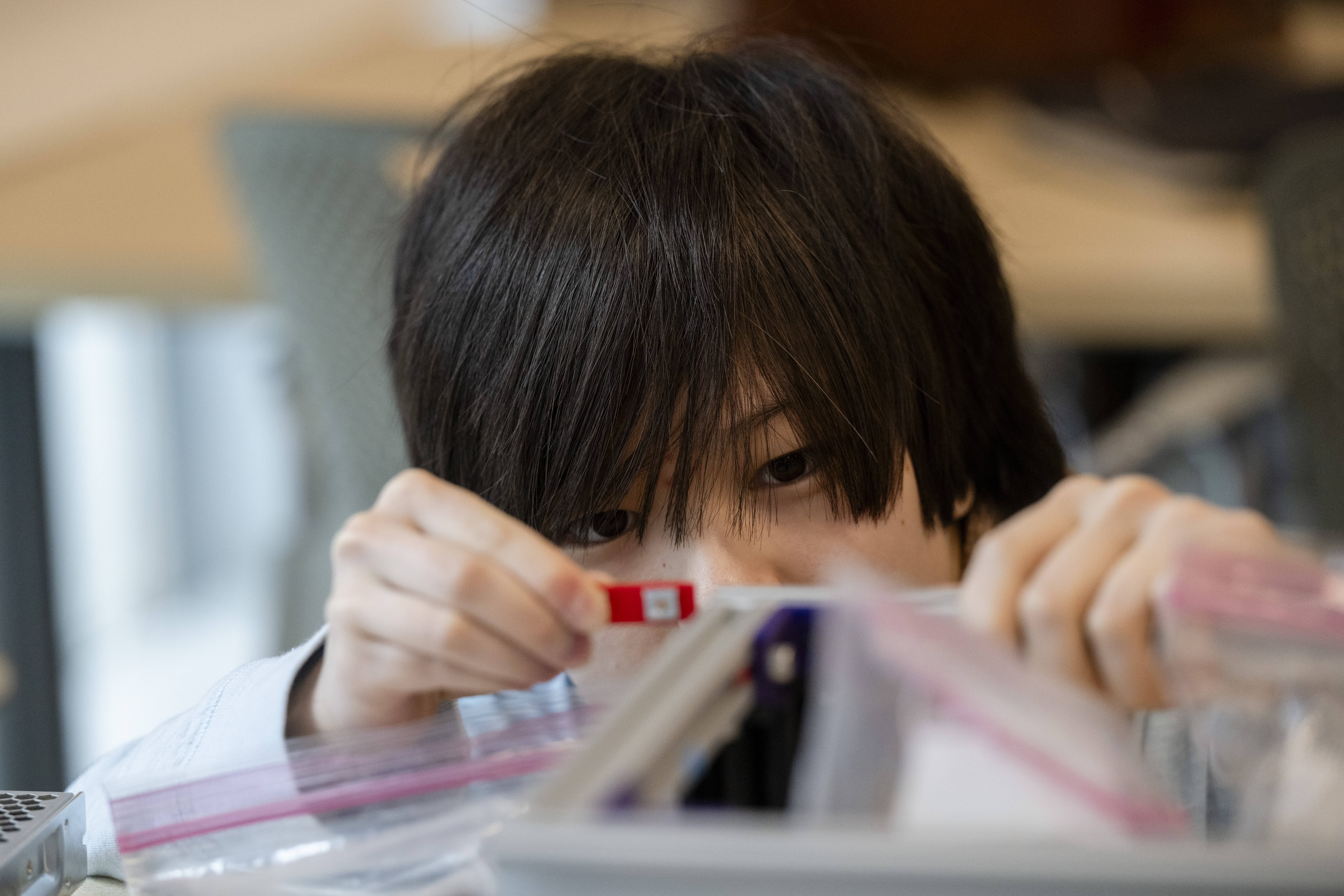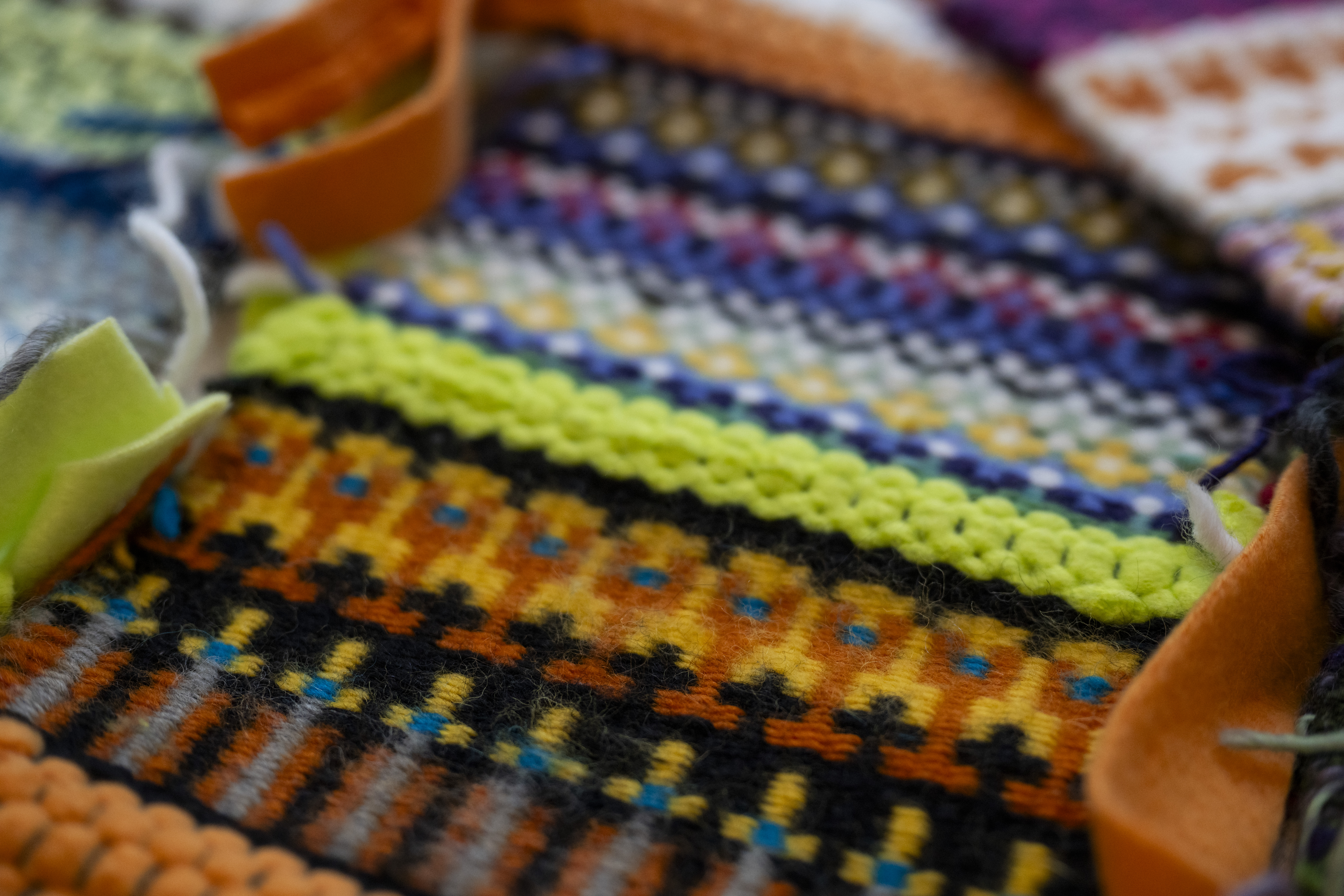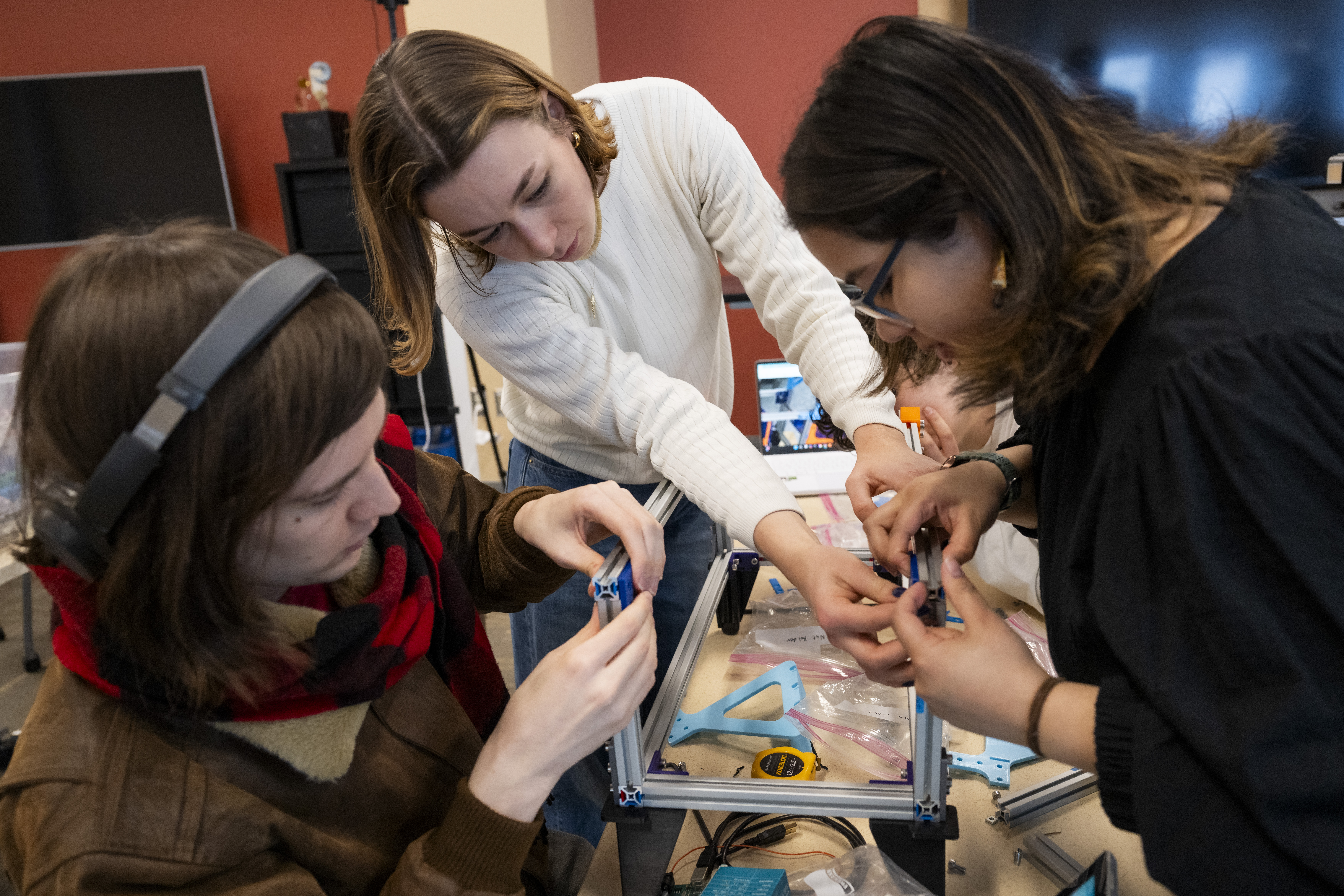
Instructor Spotlight: Olivia Robinson
By Sarah Elizabeth Bender
Within the Integrative Design, Arts, and Technology (IDeATe) network at Carnegie Mellon, talented instructors come together from departments across campus to build a collaborative atmosphere and grow interdisciplinary expertise and creative inquiry through making. We asked Teaching Professor Olivia Robinson a few questions about her work, to find out more about the ways she inspires students to innovate beyond the traditional boundaries of their primary majors.
Q: In your own words, give us an overview of the classes you teach for IDeATe.A: I teach classes that are more or less textile-based. Most are a bit unusual for textile-based classes, though. For instance, I teach a natural dye course in collaboration with a chemist, and I teach a weaving course in collaboration with a roboticist. I also teach an inflatables class, where students create large-scale sculptural forms. So, each of these are textile related — but they cover more than straightforward textiles.

Q: Students from all backgrounds, not just those already familiar with working with textiles, can take your classes. How can learning about soft technologies elevate any academic experience? What lessons might translate to other disciplines?
A: Soft technologies are soft, pliable media that are responsive to human interaction or environmental elements. They can be found in disciplines across the university — from textiles and costumes to soft robotics or chemistry and material sciences, for example.The courses I teach in soft technologies are primarily hands-on and focus heavily on materiality. With so much of our work being computer-based today, these courses provide students a welcome break from their screens and keyboards. They encourage students to engage both their mind and bodies, helping them develop a deeper, tacit understanding of working within the material world.
I also believe that textiles, as an art form, are more approachable than other mediums we might have preconceived ideas about. For instance, I love the weavings students create in our Intro to Textile Media course, taught by Natalya Pinchuk. The medium seems to facilitate curiosity, possibility, and complexity in each student, no matter their discipline or how much previous experience they have. And even if no one ever works with fabric as a creative medium again, the students have a new relationship to textiles and creativity. The classes often lead to a deeper understanding and greater respect for textiles and the people who create them.
Not to mention, textile skills are very practical and useful in everyday life!

Q: Within IDeATe, students have the chance to work on projects with other students from across campus. What opportunities for interdisciplinary collaboration do your classes offer? Why is that important?
A: I consistently hear from students in our courses that they find the opportunity to meet students from other parts of campus incredibly beneficial. Students tell me that they often take classes within their major with the same students semester after semester. The chance to connect with other students who have different skills and perspectives is not only valuable, but also invigorating, sometimes challenging and hard, and always enlightening.
On a practical level, this interdisciplinary collaboration helps students develop skills in working on projects and communicating with people who have different viewpoints. I’ve found that the students who are drawn to IDeATe classes actively seek these opportunities -— they’re curious about the world, other people, and ideas or media beyond their primary field of study. A lot of what we do in IDeATe is about nurturing that curiosity.

Q: Share a bit about your own work outside the classroom. What projects are you working on? How do they inform your teaching?
A: Most recently I have been working with a prison abolitionist group called Let’s Get Free: The Women and Trans Prisoner Defense Committee. I love both the purpose of the group and the amazing people who are a part of it.Whenever I participate with a group, I look for ways to use my skills to contribute to the work. With Let’s Get Free, I co-organized their most recent annual art show fundraiser. In 2024 we had over 200 pieces — more than 150 created by artists in prison and another 50 donated by artists who are in solidarity with prison abolition. We auctioned these works off, with all the proceeds going to the organization. I also co-facilitated the creation of a community quilt that over 30 people contributed to, and we raffled it off. The money supports the incredible programs and advocacy that Let’s Get Free does.
When I do work within the broader community, I learn so much about teaching. Facilitating a group experience is central to both community organizing and education, and in community I experience many styles of facilitation in action. This shapes how I work with my own students.
Q: What do you find most meaningful or impactful about teaching with IDeATe?
A: IDeATe embraces the idea of collaboratively taught courses and courses that experiment with interdisciplinarity. While structural challenges can sometimes make co-teaching difficult or even impossible, IDeATe actively supports it as a core part of education, which is phenomenal.
I have learned a lot about assumptions and values by co-teaching with others from different disciplines -— not only about my own values in teaching and pedagogy, but also about those of my co-teacher and our disciplines as a whole. This includes perspectives on classroom activities and dynamics, how to organize a semester, assignment design, and expectations for both students and instructors.
In my experience, the way STEM educators approach these elements differs greatly from those in the arts. Engaging with these differences expands my understanding of pedagogy beyond my own field while also reaffirming and elevating the teaching practices I value.
Q: What’s one key takeaway you hope students in your classes have learned by the end of the semester?
A: What immediately comes to my mind is this: when the pandemic hit and teaching moved online, I remember setting two main goals. First, I wanted to give students creative and challenging assignments that would get them off the computer and working with their hands. Second, I hoped that at some point during the semester, something we did in class would bring them joy. As it turned out, they also learned about textiles and created pieces that they felt proud of — but those were my primary goals. I’ve carried that aspiration into my post-COVID teaching.
I also spend a lot of time thinking about students who don’t come from an arts background. My goal is that our classes support the students' creative and artistic explorations, no matter the amount of formal experience they bring into the classroom.